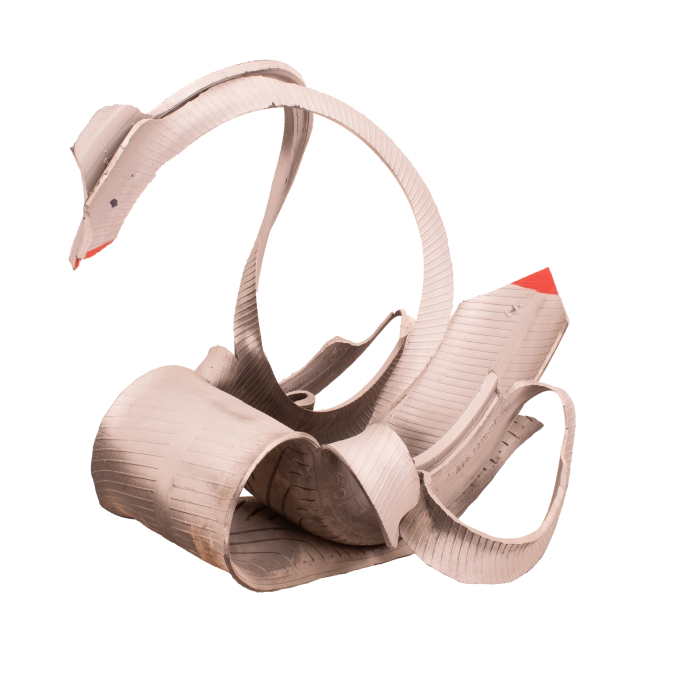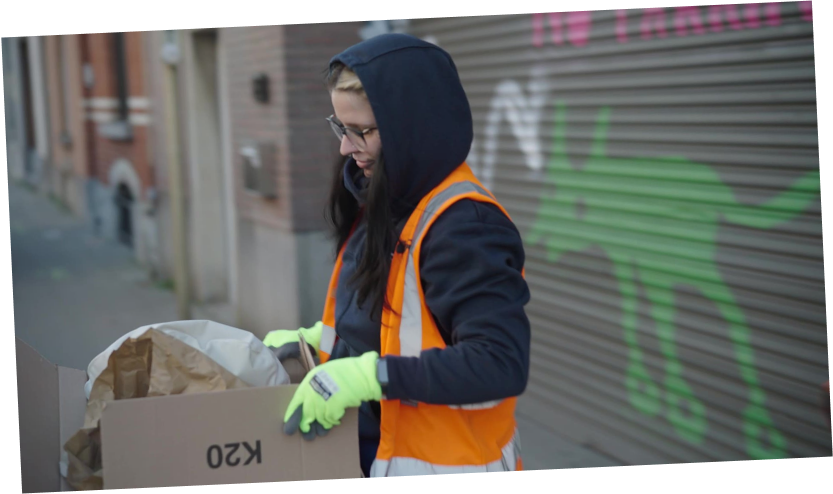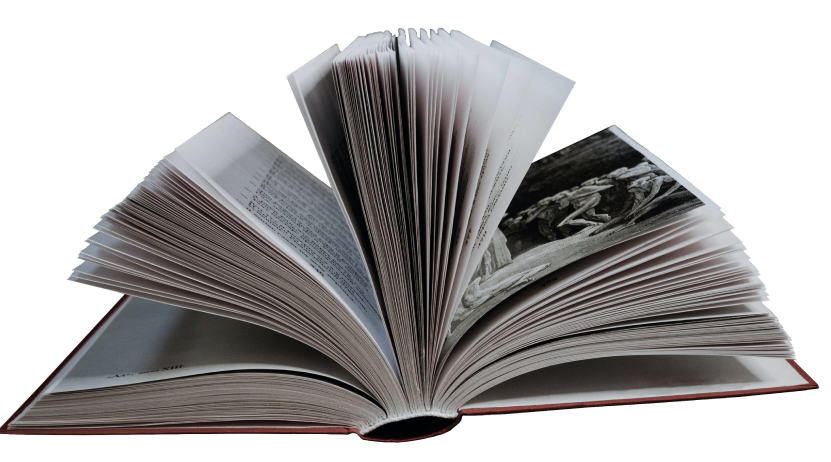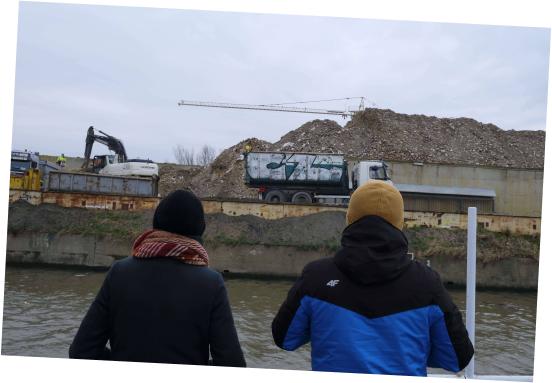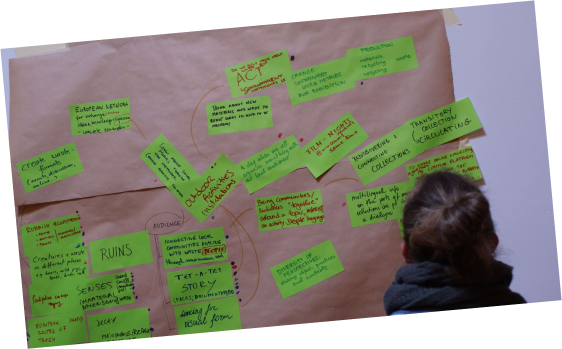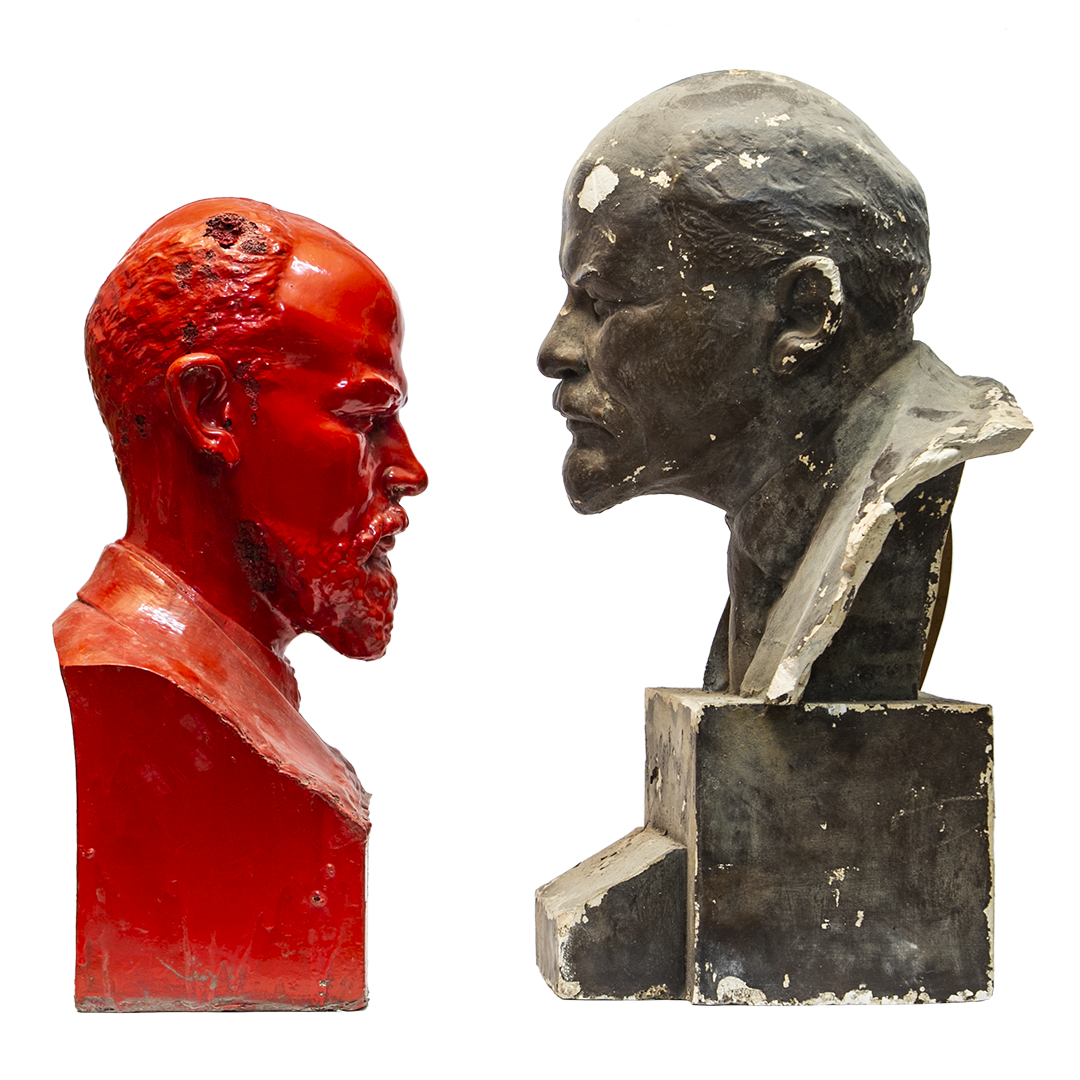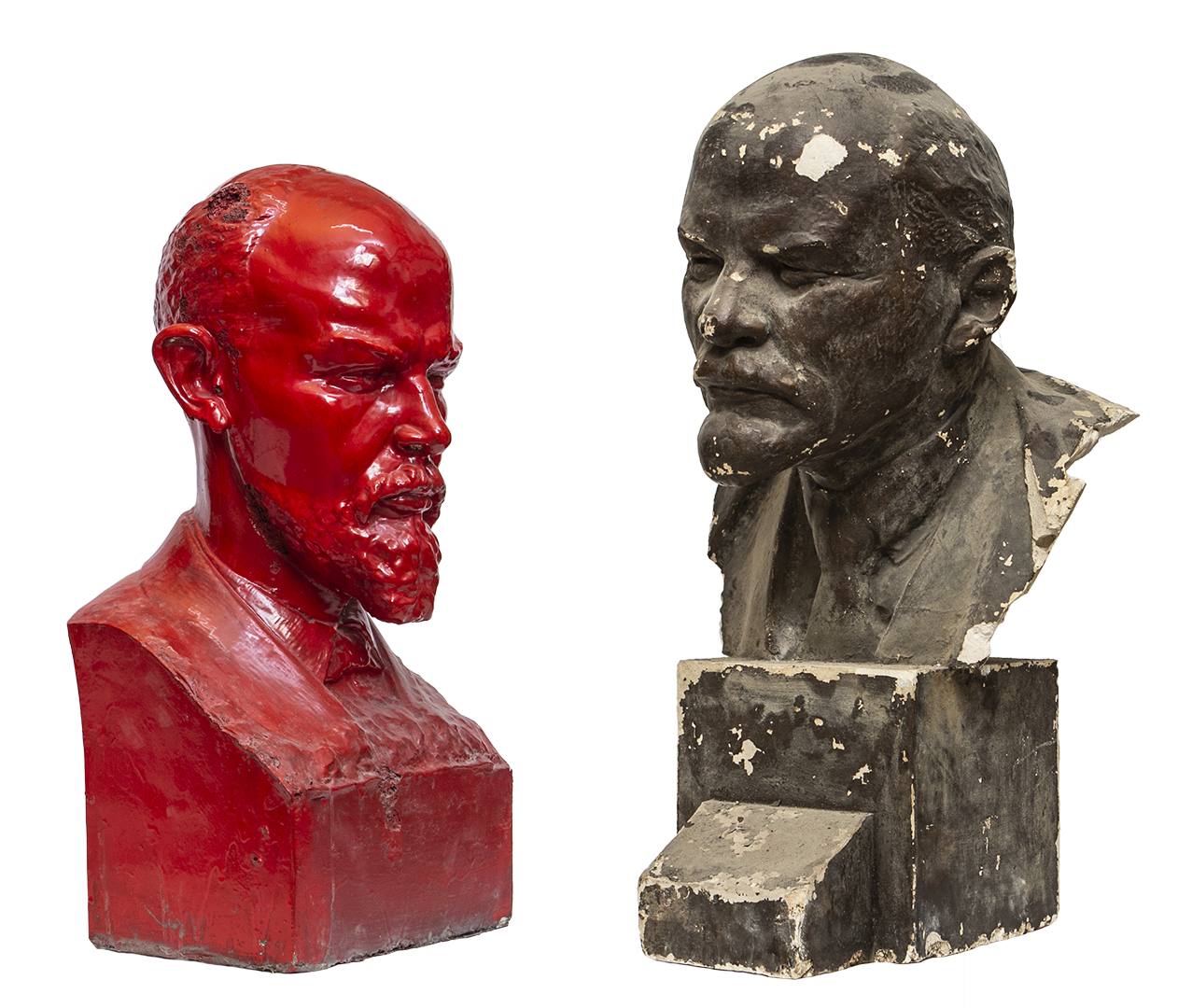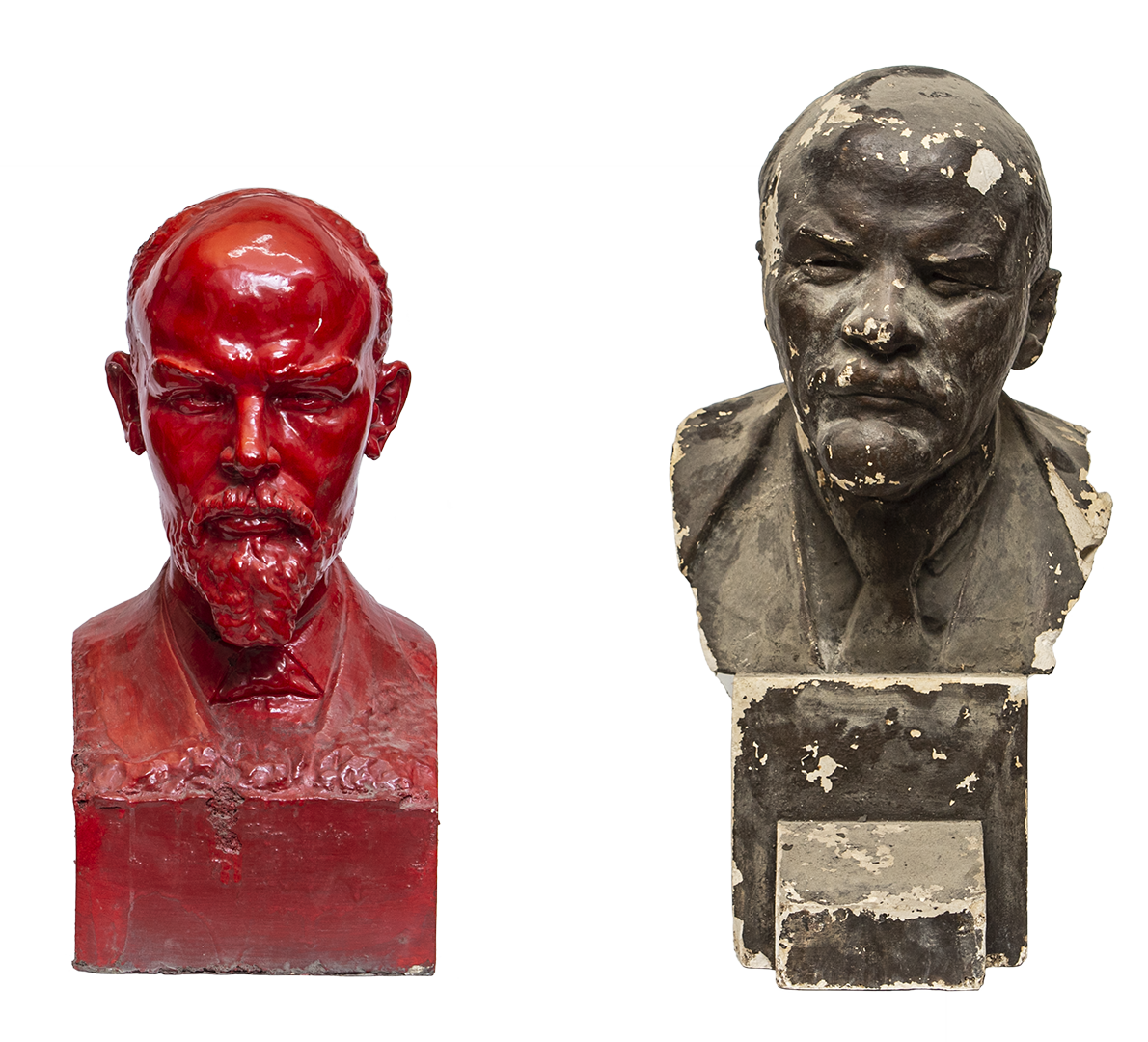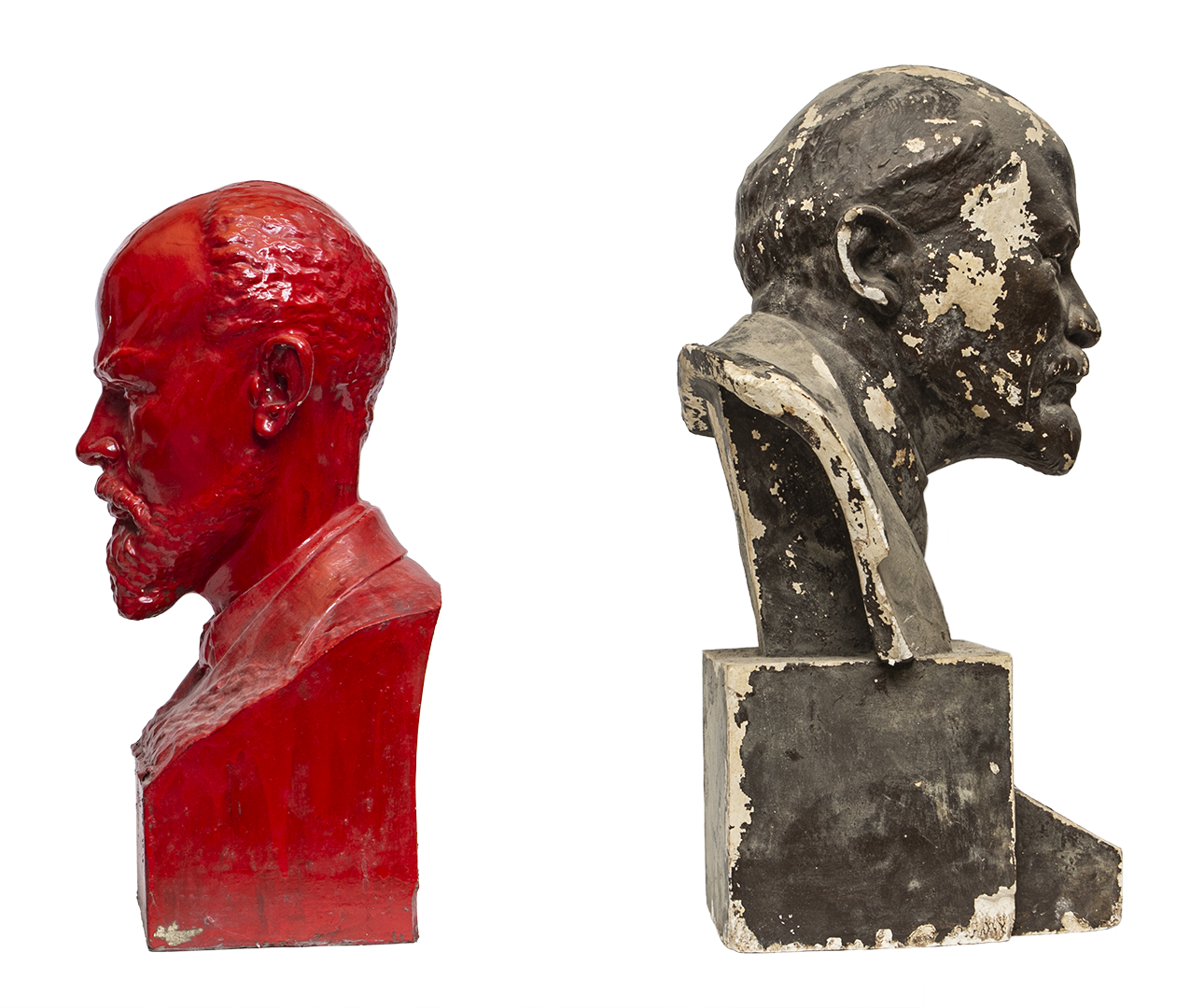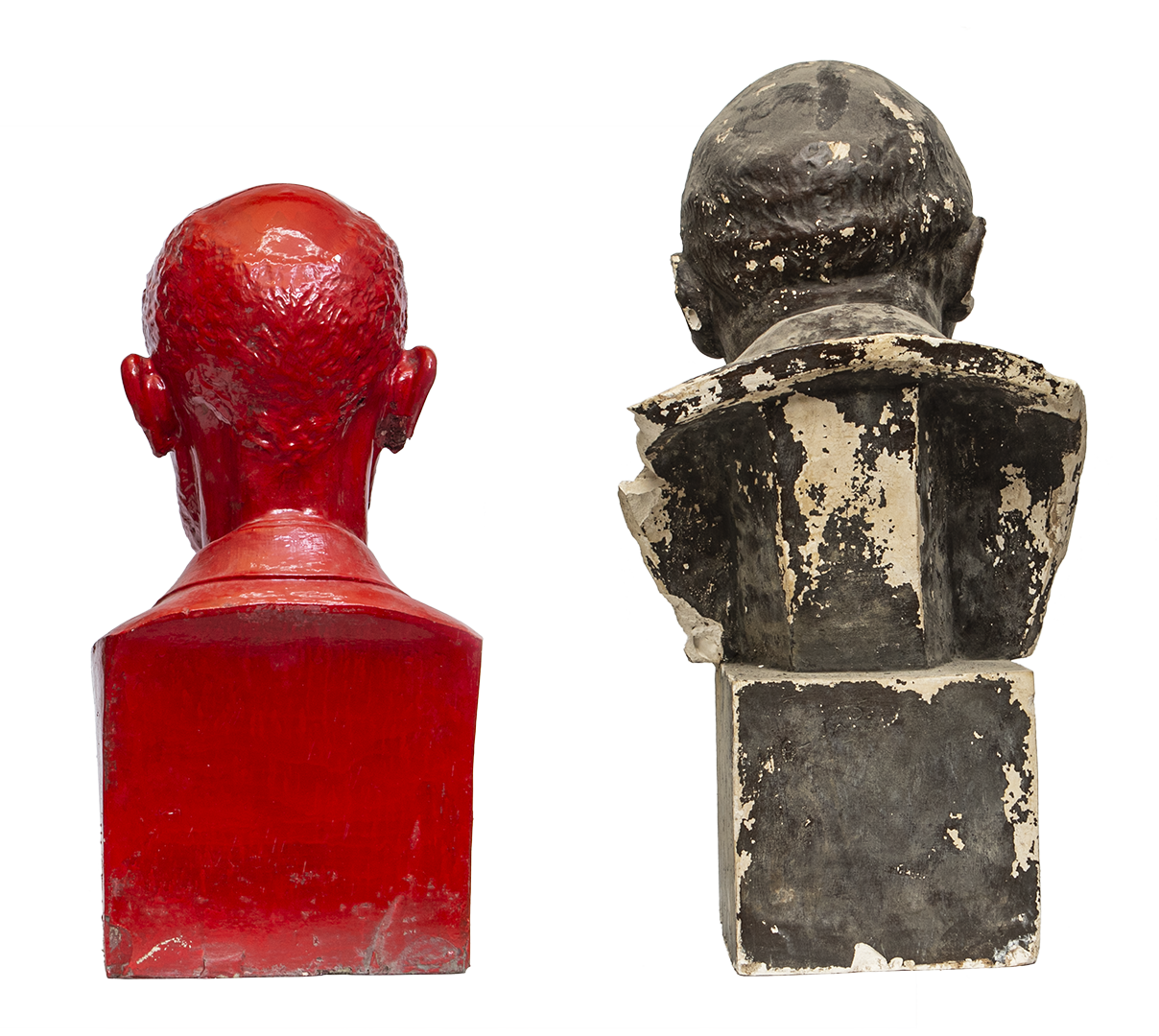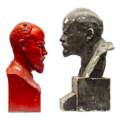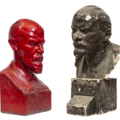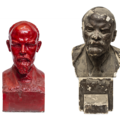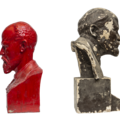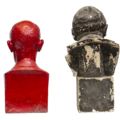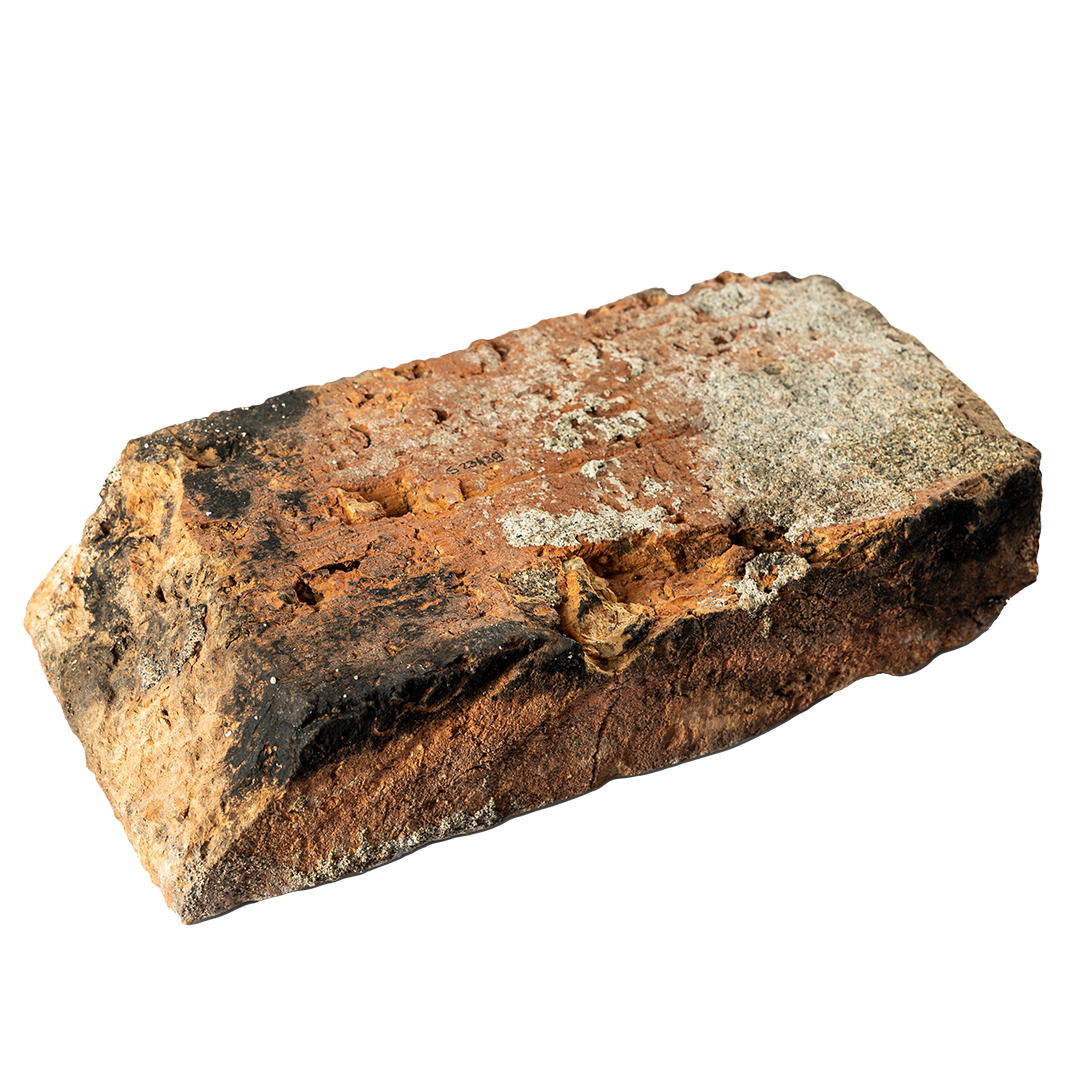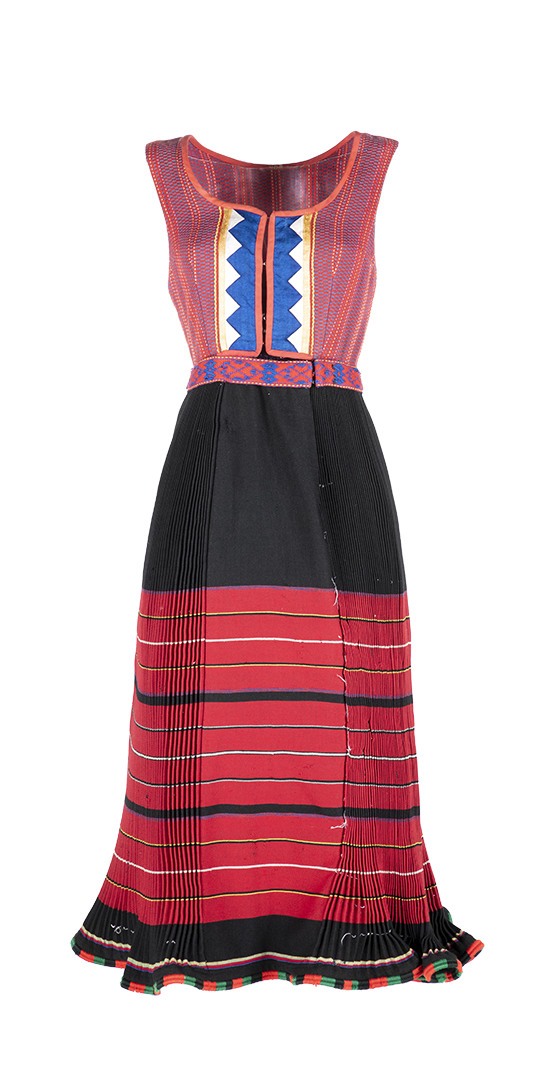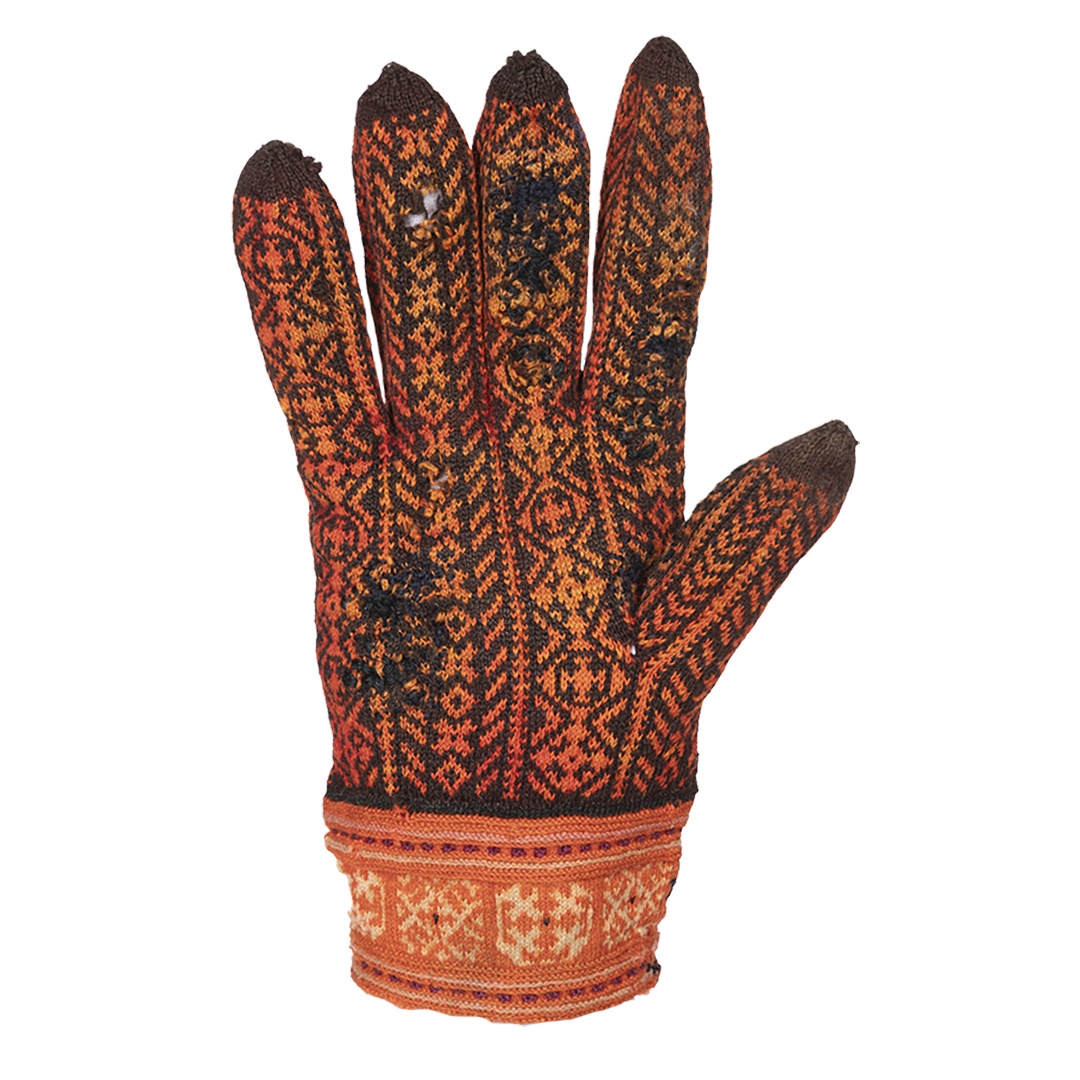Artist/Maker Unknown
Date Production/Creation
Cca. 1950s-1960s
Entry in the museum collection
1990
Place of origin
Unknown
Current location
National Museum of the Romanian Peasant, Bucharest, Romania
Material
Plaster, toning/varnish
Dimension
61 x 34 x 32 cm (Grey Lenin); 52 x 24 x 21 cm (Red Lenin)
Inventory Number C.Sc-0001, C.Sc-0002
Keyword Cultural heritage Memory Rubbish
Copyright
Status In storage
Image Credit Copyright NMRP
Personality cult, kitsch and oblivion: Busts from the Lenin-Stalin Museum, which existed in Bucharest.
What is this object about, who are the people behind it?
The two busts form part of the V.I. Lenin personality cult, which began in the USSR and spread across the entire Eastern bloc following the installation of socialist state regimes. They bear witness to the way in which museums handle artefacts over time. They come from the Lenin-Stalin Museum established in 1951-1955 in Bucharest (as a branch of the Central V.I. Lenin Museum in Moscow), which operated in various guises until 1990. The busts most probably arrived from the USSR in the 1950s, although after 1945 such sculptures were also produced locally. The history of the Soviet-inspired museum is currently being researched.
What places is this object related to, how European/transnational is it?
The two busts mirror the relations between Romania and the Eastern bloc as a whole, including the USSR, which became the hegemonic power in Central and Eastern Europe after 1945. The Central V.I. Lenin Museum in Moscow also had branches in several Eastern bloc countries, each broadly replicating the example given by the central museum. The destruction of statues of communist leaders in the 1989 anti-communist revolutions across the entire Eastern bloc is part of the history of de-deification of the leading figures of communism – from the demolition of their statues to their revaluing in places like Grūtas Park or Memento Park – of which these busts form part.
Why and how did this object arrive in the museum’s collection?
In 1990, the newly established Museum of the Romanian Peasant inherited the building and a large part of the Communist Party museum’s collections, which it either gave away or threw away. It later found that the basement was home to an additional storeroom where, in the second half of the 1960s, the artefacts from the former Soviet museum had been moved. The two busts most probably come from among that museum's exhibits and were ‘hidden’ in that storeroom when – still in the communist era – Romania distanced itself from the Soviet hegemony and took a nationalist cultural and ideological direction. Thus, the iconic figures of Soviet communism were replaced with a new, national mythology in which the Romanian Communist Party and the state become intertwined.
What is the relation of this object to waste?
There are multiple associations between the artefacts and waste. Firstly, both busts were disowned after the Bucharest regime took a nationalist direction. Furthermore, after 1990, all the artefacts of the newly established Museum of the Romanian Peasant started to be classified into art-related aesthetic categories. The busts therefore underwent a double-downgrading: as reproductions of an original and as belonging to the Socialist realism art form. The red bust was exhibited at the "Ciuma" ("Plague") exhibition, and removed from the world of mass production by being modified and implicitly turned into kitsch, which itself is associated with the manipulation of emotions. It was then forgotten, along with the grey bust.

